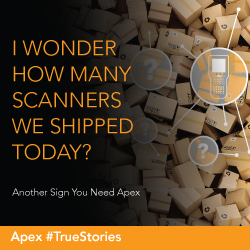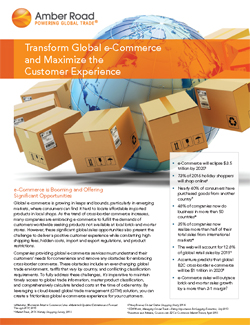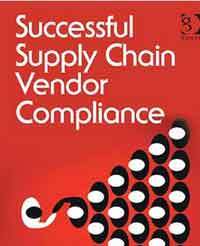Ha! Walmart Proves Me Right on eFulfillment
A couple of months ago, I penned what I thought was a pretty provocative First Thoughts column that basically argued this: retailers are in effect complicit - albeit forced to behave that way by Amazon - in the on-going woes of brick and mortar retail by the way they are handling the costs of efulfillment. (See Irrational Shipping Prices and the Demise of Brick and Mortar Retail.)
I wrote then the following: "Here in 2017, the free/highly discounted shipping policies of Amazon, other retailers, and even UPS itself is accelerating the demise of brick and mortar retail at a faster rate - perhaps much faster - than would otherwise be the case. This is an incredibly important point."
I added that "In other words, is the growth of ecommerce - and major financial woes in some but not all sectors of brick and mortar retail - something of a fraud, based on irrational shipping charges by virtually everyone in the market?"
| GILMORE SAYS: |
If the delivery carriers say enough is enough, that will force etailers to either change shipping costs to reflect these higher charges from carriers - or continue the madness and just lose more money on ecommerce.
WHAT DO YOU SAY?
Send us your
Feedback here
|
The point was this: would ecommerce continue to grow at 14-15% quarter after quarter if etailers actually charged what they should be for handling and shipping?
And the ironic thing is that for Amazon, every on-line order is new revenue and margin. But for traditional retailers, much of their ecommerce sales (it varies) are cannibalizing sales at their brick and mortar stores, where profits are much higher for each sales dollar, after considering order picking and shipping costs, returns, etc. required for ecommerce. So retailers of necessity are investing heavily in ecommerce, even if the net result is to swap profitable sales in store for unprofitable sales on-line. What a business model mess.
I will also here explain the UPS reference above. Early this year, the parcel giant announced rather astounding news that profits were down in Q4 - because it saw too much growth in its ecommerce business.
UPS says it makes greater margins on its traditional B2B business, because there are fewer, generally closer stops, often delivering many parcels at a time, versus onesies with trucks driving around neighborhoods like yours and mine to make a stop at house here and there.
So, costs per delivery in B2C are higher than B2B for sure - but margins obviously are a factor of both cost and revenue. So UPS (and we assume FedEx) either can't or for some reason hasn't taken ecommerce delivery rates to the point that they can earn equal margins with B2B.
And why is that? In large part because retailers such as Amazon and almost everyone else are giving away or deeply discounting the shipping to consumers, so they have to negotiate like the dickens with UPS/FedEx to avoid losing even more money.
And that's because consumers either just won't pay for it, or have been trained not to buy if shipping costs are actually realistically charged.
In the end, I said this: "The simple reality is that in most cases, the in-store price should in fact be lower than the on-line price," even though most retailers try to have the same prices across channels, or in some cases actually sell some goods on-line for less.
We received quite a bit of feedback on that first column, such that I might do a whole "readers respond" piece using those comments soon, but I will note several readers suggested my analysis was partly flawed.
How so? That I wasn’t considering the substantial costs involved in brick and mortar retail in terms of real estate, rents, store operations, etc., while focusing just on the fulfillment costs for ecommerce deliveries.
I think there is some merit in that critique, but for now will just say that in general retailers price their goods in a way that delivers a profit from brick and mortar sales, whereas most, including Amazon, make little profits or have losses in ecommerce operations.
 So with that backdrop comes this interesting news just last week: Walmart has announced plans to offer discounts on more than a million on-line-only items that customers then pick up at stores rather than having the order shipped to their residences. So with that backdrop comes this interesting news just last week: Walmart has announced plans to offer discounts on more than a million on-line-only items that customers then pick up at stores rather than having the order shipped to their residences.
An analysis by Bloomberg found the discounts ranging from 5-11%, depending on the item.
Marc Lore, head of WalMart’s ecommerce business, said in the statement, that "Quite simply, it costs less for us to ship to stores. So, our customers should share in those savings."
High five please, to SCDigest.
For now, the discount will only apply to on-line only items. Most retailers that provide order on-line, pick up in store programs already provide free shipping - if shipping is required - on those orders.
I am sure there are multiple reasons for this Walmart program, among them finding any way it can to slowdown the dominance of Amazon using a pricing strategy that the store-less Amazon can’t exactly match, but I am hoping that part of the thinking is that in fact logistics charges need to be better anchored to actual costs.
Finally, a couple of other related notes.
News in the last two weeks that local delivery providers in Japan are tired of accepting below average margins on efulfillment - and are doing something about it.
According to the Nikkei Asian Review, a home delivery firm recently told a Tokyo trading company it wanted to raise shipping fees by more than 50%. While the trading company pushed back hard, and it’s not clear what the final agreement was, the demand was part of a widespread trend.
Yamato Transport, whose clients include Amazon, plans to raise its basic shipping rates sharply by the end of September.
Fukuyama Transporting is enforcing a no-discount policy on basic rates. "Although our handling volume may decrease, there is a constant level of demand," said a person at the company. "We need to secure a level of profitability that matches our operational burdens and as well as redelivery and other costs."
This trend may certainly spread to US and elsewhere. So if the delivery carriers say enough is enough, that will force etailers to either change shipping costs to reflect these higher charges from carriers - or continue the madness and just lose more money on ecommerce.
Then just last week there was a story that real estate giant Prologis was breaking ground on a new three-level DC very close to the port of Seattle.
Though much of the focus will be on transloading and crossdock processes, the company also said it would provide ecommerce services, without a lot detail.
With the pricey real estate and high operational costs with the multi-story model (a throwback to urban warehouses of many years past), one consultant said the costs to use the facility might be 2-3 times what it could cost to operate a normal DC further away from the port. An article in the WSJ published when the plans were announced in 2016 estimated the costs at a less extreme but still hefty 50% premium to normal 3PL costs.
Prologis is betting tens of millions of dollars that some subset of US importers will be willing to absorb those much higher costs in return for great velocity of goods to meet the demands of - what else - efulfillment.
"We are building for the mile activity and for the last mile," said a Prologis executive.
Will it work? Just how much will companies spend for speedy efulfillment - and will customer pay anything?
These are among the key questions of our supply chain times.
Do you agree with Gilmore's analysis - or not? What would happen if retailers actually charged what it costs to pick, pack and ship ecommerce orders? Will parcel US carriers raise rates sharply - and will etailers just take it? Let us know your thought at the Feedback button below. |




![]()
![]()

![]()
![]()








 So with that backdrop comes this interesting news just last week: Walmart has announced plans to offer discounts on more than a million on-line-only items that customers then pick up at stores rather than having the order shipped to their residences.
So with that backdrop comes this interesting news just last week: Walmart has announced plans to offer discounts on more than a million on-line-only items that customers then pick up at stores rather than having the order shipped to their residences.

